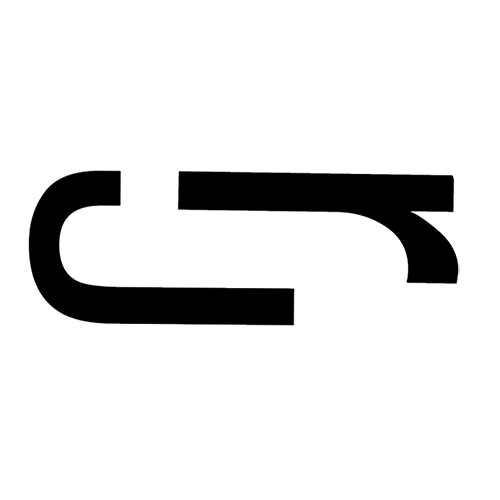
Just a chill guy writing about the consumer tech lifestyle
I don’t have a face for YouTube or a voice for Podcasting, but I love tech, and I like writing, so here we are.
2-Phone Tales: iOS and Android in 2025
Lately, I’ve been thinking a lot about my tech setup—especially since I upgraded to the Galaxy S25 and started wondering if I could ever swap it with the iPhone as my primary mobile device. It’s that good.
Lately, I’ve been thinking a lot about my tech setup—especially since I upgraded to the Galaxy S25 and started wondering if I could ever swap it with the iPhone as my primary mobile device. It’s that good.
Spoiler: I’m probably not giving up either ecosystem anytime soon.
This reflection started because of two things:
1. I really like the S25 and want to use it more.
2. My M2 MacBook Air is starting to frustrate me, and I wondered—could an Android tablet step in when I just don’t want to deal with a laptop?
Short answer? Not really. Android tablets are definitely more capable than iPads when it comes to multitasking and file management, but a tablet still can’t replace a full computer. At least not for my use cases.
Why I’m Still Stuck in the Apple Ecosystem (For Now)
Even though I’m using the S25 more often, I can’t fully walk away from Apple yet. The ecosystem lock-in is real—and emotional. I’ve told myself I have to have an iPhone for things like group chats, and just general social ease. And also… I bought the iPhone 16 Pro Max just three months ago.
Still, I’ve started to question that self-talk.
When I break down my actual phone usage, it’s more social apps and media than traditional calls or texts. I talk on the phone with maybe five people regularly. Could I switch? Maybe. Will I? Probably not today.
But for everything else—watch, headphones, tablet—it’s all on the table. The longer I use both platforms, the clearer the strengths and weaknesses become.
Samsung: What It Gets Right
The S25 has been a joy to use. Here’s what I love about the Samsung ecosystem:
File management: Real folders, drag and drop, and no iCloud drama.
Customization: Themes, widgets, and Good Lock make the phone feel mine.
S-Pen: Still underrated. Great for notes, screenshots, and signing stuff on the go.
Multi-window support: Legit productivity booster.
Screen: Bigger, brighter, and more immersive than the iPhone—especially for social or video.
Cheaper accessories: Everything from cases to earbuds costs less.
Audio control: System-level EQ improves sound across all apps, not just Spotify.
Better pricing on digital purchases: No Apple tax means subscriptions (like YouTube Premium) are cheaper.
Secure Folder: iOS just doesn’t have a true equivalent.
Physical SIM: Still easier to swap than eSIMs, especially when traveling
Samsung’s Pain Points
Despite all that, Samsung (and Android in general) still has some drawbacks:
App quality: Many apps are better-designed for iOS or aren’t available on Android at all.
UI quirks: A few random annoyances in One UI 7 that Apple smooths over better.
App/store bloat: Google, Samsung, and now multiple overlapping AI tools—it gets messy.
Cloud services: Google is more flexible; iCloud feels more secure. Neither is perfect
Where iPhone Still Wins
Physical design: The iPhone 16 feels great in the hand—even without a case. The S25's corners are sharper and less comfy.
Face ID: Still miles ahead of Samsung’s facial recognition in security and consistency.
Apple Pay: I almost never swipe a card anymore. It just works.
iMessage: Still king, whether I like it or not.
App ecosystem: Bear, Apple Notes, health tracking—these are still superior on iOS.
Watch integration: The Apple Watch is tightly integrated into my day, especially for health, workouts, and sleep tracking.
Notifications: iOS handles lock screen alerts better and more efficiently.
AirPods: Samsung Buds are good, but Apple’s audio ecosystem—especially AirPods Max—is tough to beat.
Camera: Video on the iPhone is next-level. The 16PM especially shines with cinematic presets and low-light selfies.
Mobile photography accessories: Moment lenses are iOS-only, so any serious mobile photo work stays on the iPhone.
How I Use Both Devices
Here’s how things shake out today:
iPhone: Still my “main phone” for daily life, socializing, fitness, and photography. Also handles domestic travel and local errands.
Galaxy S25: My workday phone, creative tool, and international travel companion. Also great for photo editing (Lightroom with the S-Pen), file management, and using Google-based freelance tools.
The iPad Question
I don’t see myself giving up my iPad Pro any time soon. The 11" M1 model still works great for content consumption, light productivity, and general use. The idea of getting a Samsung tablet is appealing—especially since the Galaxy Tab S10 comes with the S-Pen—but I’d need to trade something in, and I’m not ready to give up the iPad or the MacBook Air.
So for now, the tablet space remains Apple territory.
The Watch War
This one’s tougher. I’m deeply invested in the Apple Watch ecosystem (both financially and habitually), and it’s hard to imagine switching. But I do like the look of Samsung’s Galaxy Watch Classic and Ultra, and rumors of non-invasive glucose monitoring on future models are very tempting.
For now, the Galaxy Watch is just my travel watch. But if a big health sensor breakthrough happens on the Android side, I’m open to reevaluating.
Final Thoughts
I’m no longer a “just Apple” person. For now, I live in both ecosystems. It’s occasionally annoying—two phones, two clouds, two of everything—but also freeing. I get to use the best tools from both worlds.
The only downside? Wanting to try everything Samsung has to offer… even when I know I don’t need another device.
Galaxy S25 Ultra First Impressions
I’m not a preorder warrior ever, but there are exceptions. The Galaxy S25 Ultra showed up on my doorstep earlier than expected. Black on black with zero hesitation.
The Galaxy S25 Ultra showed up on my doorstep earlier than expected—and before most of the major YouTubers could flex theirs. I went with the exclusive online-only black colorway, and honestly, I didn’t have to think twice. Black on black with zero hesitation. It looks clean.
The Edges Are… a Lot
After a full day of use, the design is giving me flashbacks to the iPhone 13 Pro Max. The corners are sharp—visually and literally. While the S25 Ultra is noticeably lighter, those squared-off edges dig into my hand. It’s the kind of detail you don’t think about until you feel it repeatedly throughout the day.
I still hope to rock it caseless as I get more acclimated to it. In the meantime, I’m using the brown OEM case, which does a solid job softening the grip and minimizing the edge issue. I’m also grabbing the black version to match the vibe and a clear one while it’s on sale for $12—because why not?
Side note: I miss Samsung’s leather cases. It looks like they’re following Apple’s lead and ditching actual leather. We’re left with a lighter, softer alternative that leans a little slick in the hand, but I still like it. The detailing is solid—clicky buttons and a raised ring around the camera bump make it feel thoughtfully designed.
Pocket Presence
This phone makes a statement in the pocket, much like the iPhone 13 Pro Max. It’s not uncomfortable, but you notice it’s there. While I usually prefer to use my phones naked, the S25 Ultra may take some getting used to. By contrast, the iPhone 16 Pro Max feels practically flawless without a case.
That said, I still want to give the S25 Ultra more time. The display is gorgeous, and overall, it feels like a refined upgrade. It’s an excellent phone with a premium look—especially in this blacked-out finish.
Gratuitous Upgrade? Maybe. Still Worth It.
I’ll admit it—I didn’t need this phone. My S23 Ultra is still doing everything I need, and Android has taken a bit of a backseat for me lately, anyway. But the S25 Ultra reminded me how much I enjoy the Android experience when it’s done right.
With both phones mirroring each other more than ever, there’s less separation between devices—sometimes, it feels like overkill. Especially considering I do everything except talk on the phone.
But I’m still standing by the dual-phone setup.
Having an Android and iOS device allows me to create some mental and digital separation between work and personal life. I use Android primarily for work-related tasks, which helps me compartmentalize. It might be a niche strategy, but it works for someone who lives on their phone(s).
Final Thoughts
So far, the S25 Ultra is a beautifully built, sharp-edged statement piece. It might not be the most comfortable phone to hold bare, but it’s got enough going for it—especially the display and finish—to keep me reaching for it. Gratuitous upgrade or not, I’m glad I picked it up.












